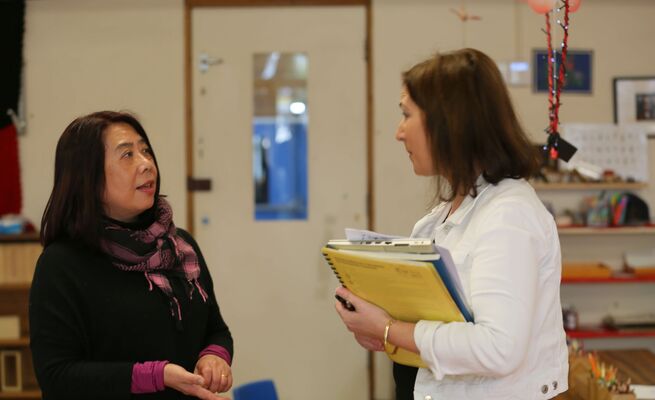Inclusion and the EYLF V2.0
This information provides an opportunity to reflect on the Early Years Learning Framework V2.0 (EYLF) through an inclusion lens. This may support educators to examine and refine the links between the EYLF, their practice and inclusion for all children.
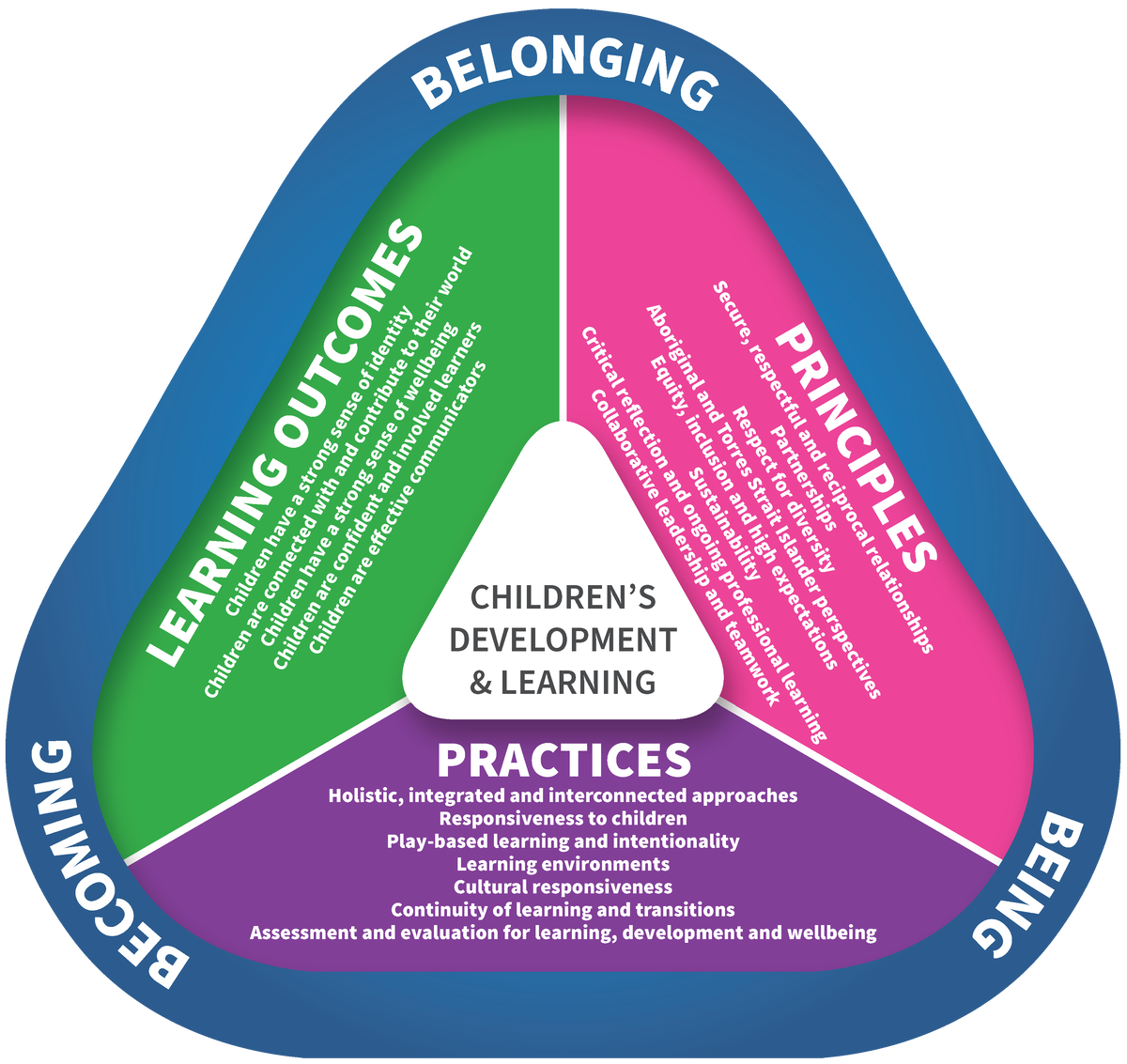
Definition of inclusion in the EYLF V2.0
“Inclusion involves taking into account all children’s social, cultural and linguistic diversity (including learning styles, abilities, disabilities, gender, sexual identity, family circumstances and geographic location) in curriculum decision making processes. The intent is to ensure that all children’s experiences are recognised and valued. The intent is also to ensure that all children have equitable access to resources and participation, and opportunities to demonstrate their learning and to value difference” (p.66).
Reflect: How does your program reflect this definition of inclusion?
The EYLF V2.0 includes an expansion of the Principle - Equity, inclusion and high expectations.
This “includes a focus on inclusion, recognising that all children have the right to participate in quality and inclusive early childhood settings, regardless of their circumstances, strengths, gender, capabilities or diverse ways of doing and being” (p.7).
“Inclusion makes visible and celebrates the diversity of children’s lives. The revision draws on new knowledge and evidence-based practice to strengthen inclusion in ECEC settings, whereby educators enact inclusion for all” (p.7).
The updated glossary includes definitions for:
- additional needs, children living with disability, inclusion, neurodiversity, and reasonable adjustment (p.64-69).
View ACECQA’s summary of updates here:
A vision for children’s learning
“Viewing children as active participants and decision-makers opens possibilities for educators to move beyond preconceived expectations about what children can do and learn. This requires educators to understand, respect and work with each child’s unique qualities and capabilities” (p.6).
What do the EYLF principles tell us about inclusion?
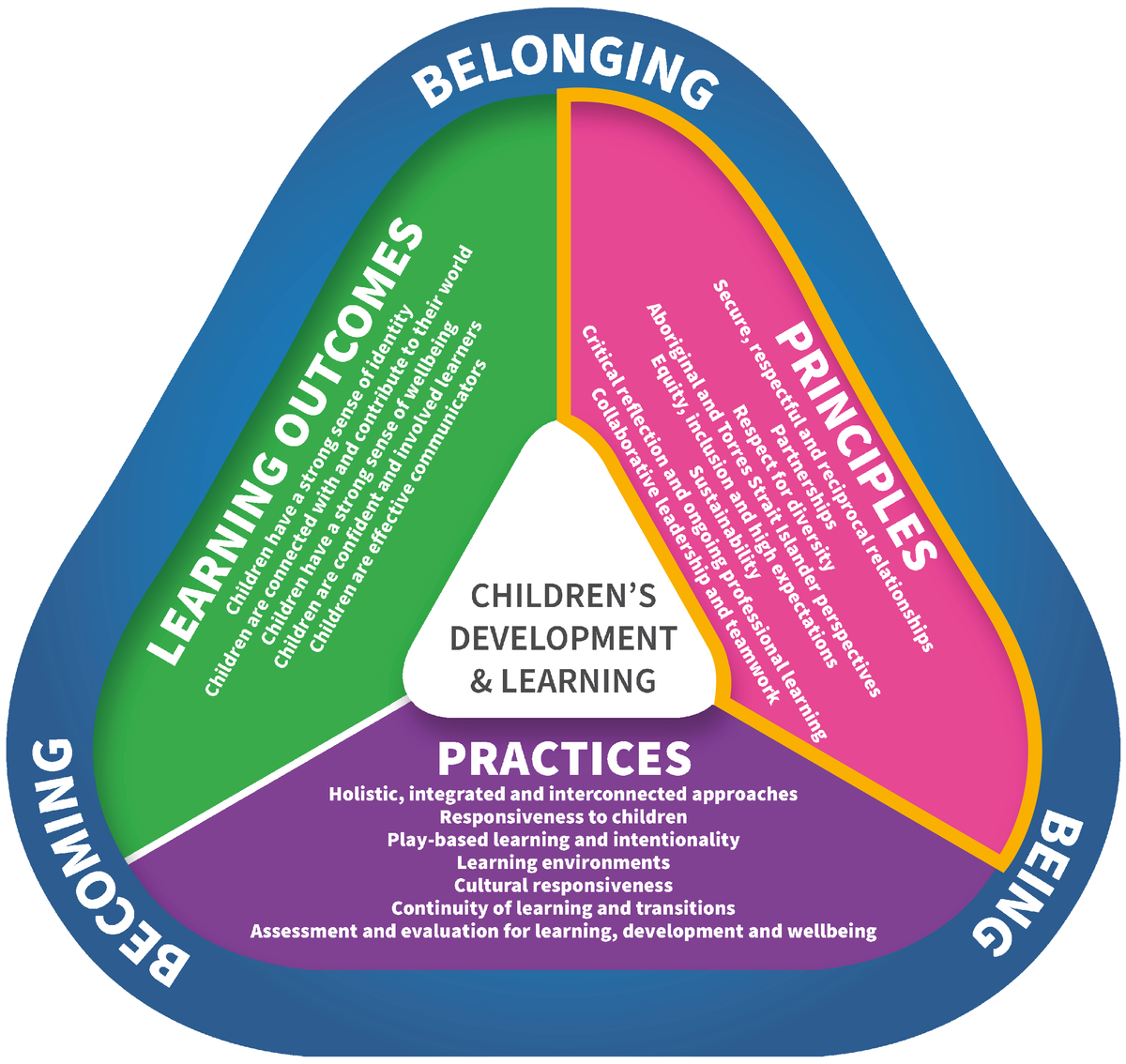
While all of the EYLF V2.0 principles are relevant to inclusion, the following are particularly pertinent and can be used to guide inclusive practice.
Principle: Equity, inclusion and high expectations
“Educators who are committed to equity recognise that all children have the right to participate in inclusive early childhood settings, regardless of their circumstances, strengths, gender, capabilities or diverse ways of doing and being” (p.17).
- Inclusive learning environments along with ‘reasonable adjustments’ support “access, participation and engagement in learning” for all children (p.17).
- “Reasonable adjustments are the measures or actions taken ... to assist the meaningful participation of children with disabilities or who are experiencing barriers to learning” (p.17).
- “Attitudinal and practical barriers” related to disability and neurodiversity (along with other factors) can be faced by children, and these must be recognised and responded to (p.17).
- Critical reflection is important to challenge practices that may be discriminatory and to support changes that lead to a more inclusive curriculum.
- Educators have high expectations for all children and their learning. They “recognise that equitable means fair, not equal or the same“ (p.17).
Principle: Partnerships
“Partnerships are based on the foundations of respecting each other’s perspectives, expectations and values, and building on the strength of each other’s knowledge and skills” (p.14).
- “Partnerships recognise the diversity of families and children” (p.15).
- “Partnerships involve educators, families, other professionals, community members and teachers in schools working together for the best interests of children” (p.15).
Principle: Critical reflection and ongoing professional learning
“As professionals, educators collaboratively explore, identify and evaluate diverse perspectives with respect to their own settings and contexts. In this way, critical reflection informs future practice in ways that demonstrate an understanding of each child’s learning, development and wellbeing, and have implications for equity and social justice.” (p.18).
Consider reflective questions such as:
- “What is our understanding of each child, their culture and context?”
- “Who is advantaged/included when we work in this way? Who is disadvantaged, excluded or silenced?” (p.18).
Reflect: Are you and your team engaged in critical reflection on both personal and professional attitudes towards inclusion and disability?
What do the EYLF Practices tell us about inclusion?
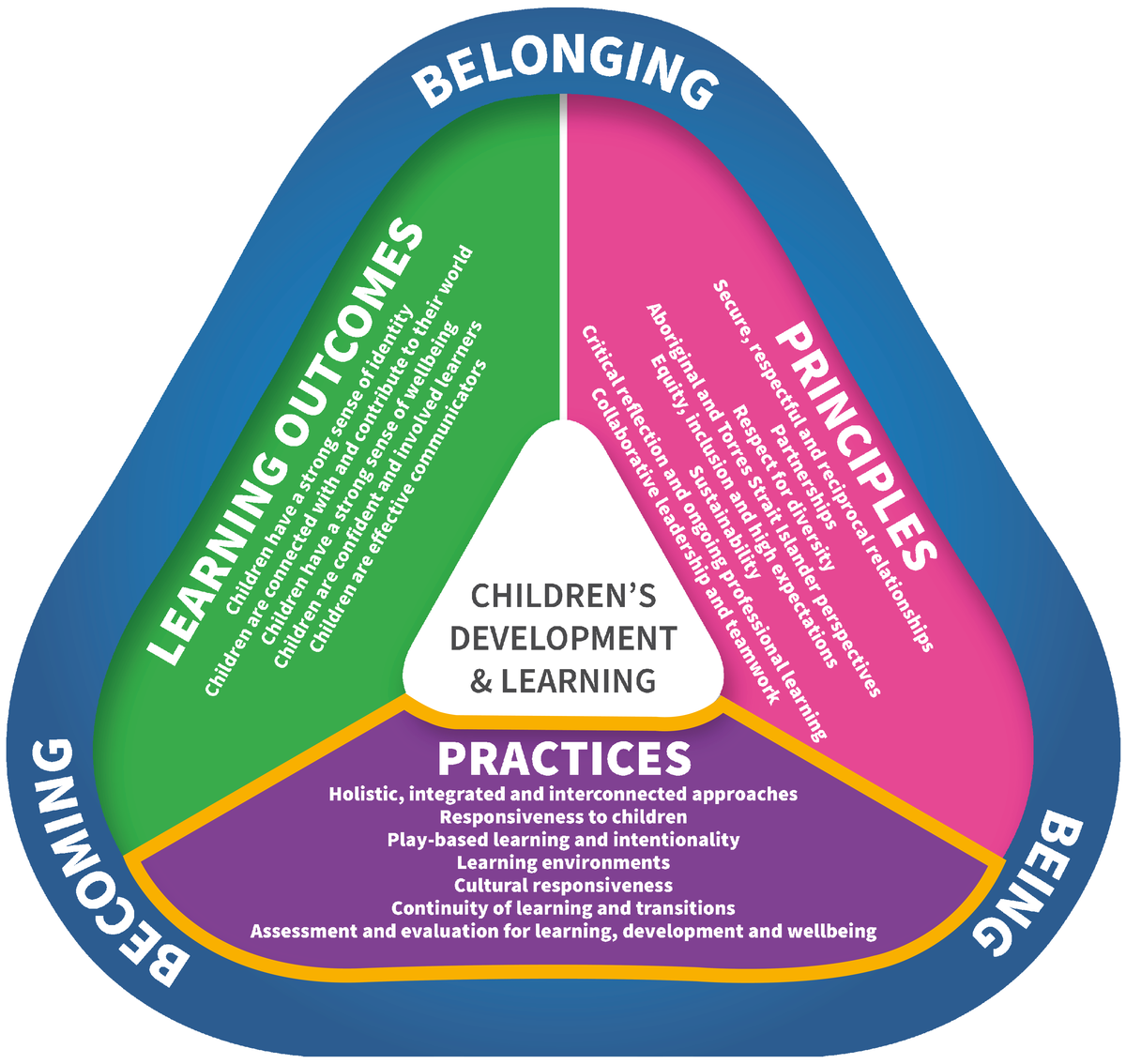
While inclusion is embedded in all of the EYLF V2.0 practices, the following are pertinent and these points taken from the EYLF V2.0 can be used to guide inclusive practice:
Responsiveness to children
“Educators are attuned to, and respond in ways that best suit, each child’s strengths, capabilities and curiosity. Knowing, valuing and building on all children’s strengths, skills and knowledge strengthens their motivation and engagement in learning. Educators are aware of, and respond to, the strategies used by children with additional needs to negotiate their everyday lives” (p. 21).
Play-based learning and intentionality
This principle supports inclusive learning environments and curriculum where all children are supported to engage in play-based learning alongside their peers.
“Play-based learning approaches allow for different types of play” (p.21).
“Educators are intentional in all aspects of the curriculum and act deliberately, thoughtfully and purposefully to support children’s learning through play. They recognise that learning occurs in social contexts and that joint attention, interactions, conversations and shared thinking are vitally important for learning” (p.22).
Reflect on your program, learning environments, and practice – how is play-based learning embedded and given priority for children with disabilities?
Learning environments
“Well planned environments cater for different learning capacities and learning styles and allow for reasonable adjustments where required” (p.23).
“Approved providers and educators are aware that the accessibility of resources and the way in which learning spaces are set up may enable some children and prevent others from participating” (p.23).
Continuity of learning and transitions
“Some families and children will need more support when they transition into an early childhood setting or school. Educators work collaboratively with each child’s new educator, teachers in schools and other professionals to ensure a successful transition” (p.24-25).
Assessment for learning
“Assessment strategies that are inclusive, culturally and linguistically relevant, and responsive to the physical, emotional, social, intellectual and regulatory capabilities of each child will acknowledge each child’s abilities, strengths and competencies” (p.25).
Along with Assessment ‘as learning’ this practice outlines both formative assessment and summative assessment:
Specific to inclusion:
“Formative assessment strategies can capture the different pathways that children take in their learning journeys” (p.25).
“Summative assessment can be based on children’s attainment of developmental milestones, which can be helpful if educators have a concern about a child’s learning abilities or wellbeing. Educators can use such information to start a conversation with families and for potential referral to other professionals for diagnostic assessment” (p.25).
“Assessment undertaken in collaboration with families can assist them to support children’s learning and empower families to act on behalf of their children within and beyond the early childhood setting” (p.26).
Reflect: How is inclusion evident in the remaining practices: ‘Holistic, integrated and interconnected approaches’, and ‘Cultural Responsiveness’?
What do the EYLF Learning Outcomes tell us about inclusion?
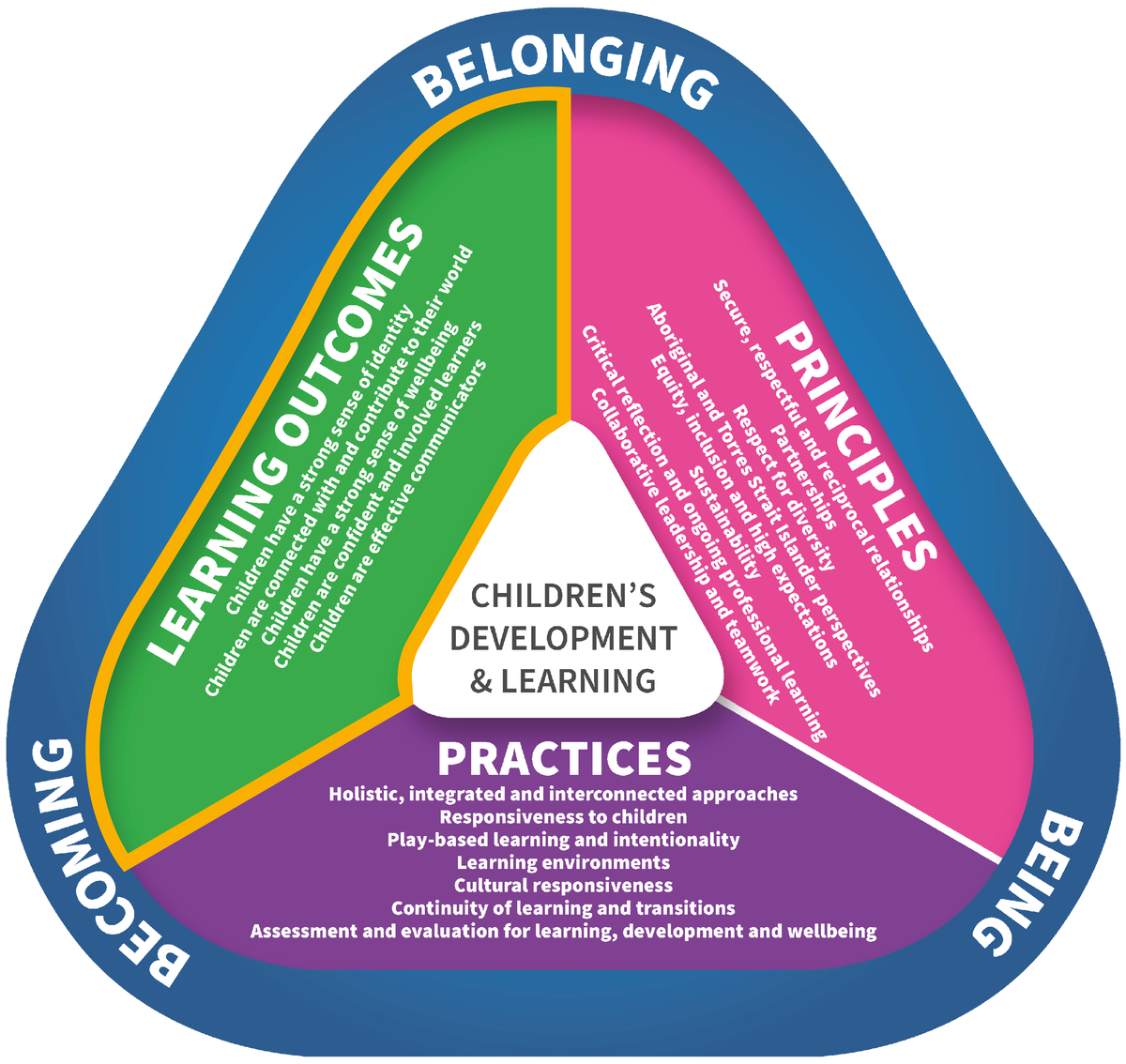
“Approved providers and educators have inclusion obligations under the Disability Discrimination Act and the Racial Discrimination Act and make reasonable adjustments for all Learning Outcomes to ensure learning engagement for all children.” (p.29).
Reflect on your responsibilities according to the Disability Discrimination Act – what does reasonable adjustment look like in your program? What else could be done to ensure all children are engaged in learning?
“Educators’ knowledge of individual children, their strengths and capabilities will guide professional judgement to ensure all children are engaging in a range of experiences across all the Learning Outcomes in ways that optimise their learning. They are committed to equity, inclusion and have high expectations for every child regardless of their circumstances and capabilities” (P.29).
Inclusion and inclusive practice are embedded throughout the Learning Outcomes. These examples of evidence and practice demonstrate how the EYLF V2.0 is relevant to learning for all children:
Outcome 1: Children have a strong sense of identity
Children:
- feel safe to participate in all activities regardless of gender, age, culture or ability
- share spaces and resources safely and equitably regardless of gender, age, culture or ability
Educators:
- develop inclusive learning approaches that acknowledge different ways of knowing, being and doing.
- acknowledge each child’s uniqueness in positive ways
- maintain high expectations of each child’s capabilities
- recognise disability as a form of diversity and demonstrate inclusive approaches in their interactions with children
Outcome 2: Children are connected with and contribute to their world
Children:
- take action to include and assist children to participate in social groups
- practise inclusive ways of being with others and achieving coexistence
- notice and react in positive ways to similarities and differences among people
- appreciate and respect different ways of knowing, being and doing.
- See “Children become aware of fairness” p.42 for more detail
Educators:
- model practices that create a culture of inclusion and social justice within the setting and community
- reflect on their own responses to diversity
- plan experiences and provide resources that broaden children’s perspectives and encourage appreciation of diversity, including disability, family diversity, cultural and linguistic diversity
Outcome 3: Children have a strong sense of wellbeing
Educators:
- Ensure that all children experience pride in their attempts and achievements
- maintain high expectations of each child’s capabilities
- provide an environment with challenges for the abilities of children
Outcome 4: Children are confident and involved learners
Educators’ knowledge of individual children is crucial to providing an environment and experiences where all children can participate and will optimise their learning and thinking.
Children:
- explore diverse ways of knowing, being and doing in their learning
Educators:
- Provide learning environments that are flexible and open-ended.
- Think carefully about how children are grouped for play, considering possibilities for peer scaffolding
Outcome 5: Children are effective communicators
“Children’s sense of belonging is strengthened when their language, interaction styles and ways of communicating are valued” (p.57).
Educators:
- provide opportunities for visual communication such as signing.
References:
Australian Government Department of Education [AGDE] (2022). Belonging, Being and Becoming: The Early Years Learning Framework for Australia (V2.0). Australian Government Department of Education for the Ministerial Council.
ACECQA (2023) BELONGING, BEING & BECOMING: The Early Years Learning Framework for Australia – V2.0, 2022
National Quality Standard links to this page
QA1 Educational Program and Practice
All elements in QA1
QA4 Staffing Arrangements
4.2.2 Professional standards

